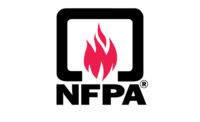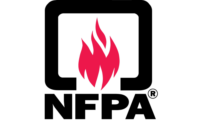On June 25, 2015, two motions will be considered at the NFPA meeting in Chicago which will impact the security industry as well as its customers. The Central Station Alarm Association (CSAA) issued the following information to explain the proposed NFPA revisions and how they could limit or eliminate private competition by listed central stations’ ability to provide remote station service. The CSAA is urging an organized industry response of negative votes on both motions.
What Is Going On?
The long task of revising NFPA 72, The National Fire Alarm and Signaling Code for the 2016 Edition, is winding down. The process to date has involved two revision editions, multiple technical meetings and public input. The last public (member) input is planned for the technical meeting at the NFPA 2015 annual meeting in Chicago.
As of today, there is language in the proposed 2016 edition of NFPA 72 that is beneficial to the security industry and security customers. This language clarifies the position that listed central stations are able to provide remote station service if that is the level of service desired. Specifically, within the proposed final edition is a paragraph which reads: “26.5.3.1.3 Alarm, supervisory and trouble signals shall be permitted to be received at a listed central supervising station.”
Despite this improvement to NFPA 72, opposition has arisen. The opposition has presented two motions (certified amending motions) to rescind the proposed language, which would leave listed central stations’ ability to provide remote station service uncertain. The two motions are:
1. Motion Sequence # 72-8 seeks to limit central station monitoring to situations approved by the AHJ.
2. Motion Sequence # 72-9 seeks to eliminate the proposed paragraph altogether.
The industry needs to come together to defeat these motions.
Why Is This Important?
Defeating these motions is important to the alarm industry. From a national perspective, the code should reflect that a facility meeting the stringent central station listing requirements automatically meets the remote station facility standards. Building in this provision prevents a central station from arbitrarily being denied recognition as a remote station, something that is currently occurring within the greater Chicago area, driven by fire departments that operate their own alarm monitoring centers. In these situations, the AHJ designates a single remote station, typically operated by the AHJ itself, as “approved” under the code and then rejects all forms of private fire alarm monitoring, including monitoring via a NRTL listed central station. This practice eliminates all private competition and leaves a government entity, who is also the AHJ, as the sole provider of fire monitoring services.
How Do You Oppose the Motions?
The process for voting at the NFPA conference is as follows:
1. Determine if you are eligible to vote in the tech session:Only NFPA members of record as of December 24, 2014, who are currently in good standing are eligible to vote at the technical meeting. To vote, the attendee must have either a full conference registration or an NFPA technical meeting only registration.
2. Show up, in person, to the tech session: The vote on these items is scheduled for the NFPA technical meeting at the McCormick Place in Chicago on Thursday June 25, 2015. The meeting starts at 8:00 a.m. Registration for the technical committee meeting is at: www.nfpa.org/training/conference/register.
Registration to attend just the technical meeting is $225.00.
3. Pay attention to the proceedings and vote negative (VOTE “No”) on both motions:The motions are trying to defeat updates to the code that are fair and reasonable. Voting this year is by an electronic voting process; it is no longer a simple show of hands. Therefore, it is critical to vote in the negative on both of these motions.
4. Inform CSAA via email (techadmin@csaaintl.org) if you are able to attend: We want to have an idea of the number of known supporting votes that will be present. If you provide the email address of your attendees, we will send them the list of others attending in the event they have any questions on the process.
What Does This Issue Look Like in NFPA Terms?
NFPA 72 - 2013
26.5.3 Facilities
26.5.3.1 Alarm systems utilizing remote supervising station connections shall transmit alarm and supervisory signals to a facility meeting the requirements of either 26.5.3.1.1, 26.5.3.1.2 or 26.5.3.1.3.
26.5.3.1.1 Alarm, supervisory, and trouble signals shall be permitted to be received at a communications center that complies with the requirements of NFPA 1221, Standard for the Installation, Maintenance and Use of Emergency Services Communications Systems.
26.5.3.1.2 Alarm, supervisory and trouble signals shall be permitted to be received at the fire station or at the governmental agency that has public responsibility for taking prescribed action to ensure response upon receipt of an alarm signal.
26.5.3.1.3 Where permitted by the authority having jurisdiction, alarm, supervisory and trouble signals shall be permitted to be received at an alternate location approved by the authority having jurisdiction.
A.26.5.3 As a minimum, the room or rooms containing the remote supervising station equipment should have a 1-hour fire rating, and the entire structure should be protected by an alarm system complying with Chapter 23.
A.26.5.3.1.3 A listed central station might be considered an acceptable alternate location for receipt of fire alarm, supervisory, and trouble signals.
Motion Seq. # 72-8
Certified Amending Motion: Accept Public Comment No. 140
Recommended Text If Motion Passes:
26.5.3.1.3 When permitted by the authority having jurisdiction, alarm, supervisory and trouble signals shall be permitted tobe received at a listed central supervising station.
Recommended Text If Motion Fails:
26.5.3.1.3 Alarm, supervisory and trouble signals shall be permitted to be received at a listed central supervising station.
Motion Seq. # 72-9
Certified Amending Motion: Accept Public Comment No. 192.
Recommended Text If Motion Passes:
The proposed new text (26.5.3.1.3) is not recommended for inclusion in the 2016 edition of NFPA 72.
Recommended Text If Motion Fails:
26.5.3.1.3 Alarm, supervisory and trouble signals shall be permitted to be received at a listed central supervising station.
For information, visit www.csaaintl.org.


